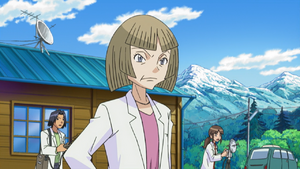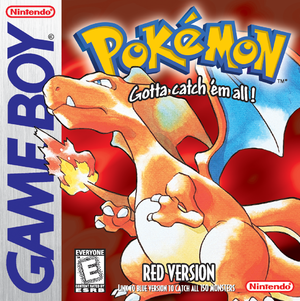Can we catch ‘em all?: Difference between revisions
No edit summary |
No edit summary |
||
| Line 49: | Line 49: | ||
“You teach me and I’ll teach you.” | “You teach me and I’ll teach you.” | ||
{{ | {{canwecatchemall}} | ||
==References== | ==References== | ||
<references/> | <references/> | ||
Revision as of 08:05, 16 May 2015
|
|
"'Pokémon is something you do, not just something you read or watch or consume.”- David Buckingham and Julian Sefton-Green, Pikachu’s Global Adventure: The Rise and Fall of Pokémon[1]
We are being studied. That is a simple fact. Pokémon and its fan base have been discussed in everything from seminal works on convergence culture to understanding children’s media consumption. Throughout media studies, various groups have studied Pokémon fans to grasp how our base has adapted to the large amount of data found within the franchise. Yet in the nearly twenty years of being studied, fans have rarely done the opposite and used media studies tools for their own benefit.
In many ways, Pokémon fans have an advantage over many other fan groups. Our franchise focuses on the infinite power of knowledge. We don’t just collect Pokémon; we collect Pokémon data. Like a living Pokédex, each one of us soaks up as much knowledge as we can, and when that knowledge becomes too much for one person, we turn to communal storage such as Bulbapedia. To be a Pokémon fan is to be immersed in a culture that requires discipline, study, and teamwork to try and be the very best. That we have so much fun while gathering that knowledge only proves the resilience and abilities this franchise has to offer.
So let’s turn the tables a bit and use one media studies theory to help us in our struggle: media archaeology. This field attempts to understand media through its technology rather than its content, or rather to process content through the lens of media specificity.
For example, let’s say we wanted to study the United States release of Pokémon Red.
Traditional media studies, or game studies in particular, might tell us to look at the video game itself. That could include studying the audiovisual content of the game, its plot or story, game mechanics such as battle, or the significance of trade in a cultural context. Those are all very fine points of study. Unfortunately, they are also very limited. How can we study why the audiovisuals looked and sounded as they did if we don’t consider the limitations of the Game Boy? Can we truly understand battle if we don’t take a peek at how data structures influence a Pokémon’s strength? How can we study trade in a vacuum without considering the hardware dependencies of a Link Cable? If we only care about the game, emulation would be close enough to a video game so as to examine the experience, but we are not just studying a game. We are studying a media object that exists in a very specific technological framework. Through the use of media archaeology, we look at the whole picture rather than one part, and we gain a richer grasp of what that picture is.
One major advantage to media archaeology as a process of study is that it gives us a chance to look at one of the more infuriating or challenging (depending on how you look at it) aspects of core series Pokémon games: versions. On the surface, versions don’t appear too complicated, seeing as the series generally follows a similar release model. In most cases, each generation of core series games begins with a pair of games, generally identical other than a few alterations, followed by a third solitary version with additional tweaks. Sometimes, a paired set of remakes from a previous generation is released, as well. For much of the franchise’s history, games have been released in four to five languages: Japanese, Korean, English, French, Italian, German, and Spanish. The general order of release begins in Japan, followed by South Korea (when included), moving to North America and Australia/New Zealand, and finally in France, Italy, Germany, and Spain.
In reality, the connections between versions are much more complicated, and media archaeology gives us the tools to understand alterations to the code itself. This gives fans the ability to understand the games in entirely new ways, and nowhere is this more apparent than in remakes. If we took Game Freak and Nintendo at face value, we might assume that Pokémon FireRed and LeafGreen are remakes of Pocket Monsters: Red and Green. By using media archaeology and digging into the code, we discover that the remakes are actually remakes of Pokémon Ruby and Sapphire with the older audiovisual content painted on top of the newer game engine. Media archaeology gives us the tools to peek under the mainframe of versions and remakes and truly grasp why they work.
You might ask yourself, who cares about all these connections when we can spend our time playing Pokémon? Surprisingly, as fans we can learn a lot from these sorts of examinations. By having a better grasp of version connections, we can exploit inter-generational trade more easily, ensuring we are able to catch ‘em all. By looking at data structures influenced by platform specificity, we can take advantage of glitches to build a more powerful team of Pokémon and defeat our enemies in battle. Perhaps most importantly, as fans we can truly comprehend Pokémon not as Game Freak or Nintendo want us to comprehend them, but instead on our own terms. We can control our knowledge of these games in ways we never could before.
I propose that we take a journey together. In this series of articles, I will examine each generation of Pokémon core series versions. Examining data structures, system requirements, trade restrictions, and localization will give us a deeper view into Pokémon. In particular, we’ll focus heavily on remakes. Finally, we can use what we’ve learned to think about how the upcoming remakes might turn out, and how future core series franchise games might be organized with the upcoming release of the New Nintendo 3DS.
So, what do you say?
“You teach me and I’ll teach you.”
| Can we catch ‘em all? |
|---|
| By ArchivistGeek |
| Introduction |
References
- ↑ Joseph Tobin, ed., Pikachu's Global Adventure: The Rise and Fall of Pokémon (Durham, NC: Duke University Press, 2004).


